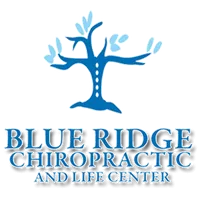Chiropractic and Headaches
Chiropractic is a whole-body approach to wellness, characterized by understanding how the different components of the musculoskeletal system affect each other and treating them with minimal invasiveness. When you understand that, it makes a lot of sense why so many people go to chiropractors’ offices to find relief from headaches. Although there are many reasons why a person might sometimes feel pain in their head, chiropractors are well-equipped to handle two of the most common recurring types of headaches: those which are cervicogenic and which result from tension. This month, we’re discussing what makes these headaches different and why your chiropractor has an important part in helping you to manage and prevent them.
Some Causes of Secondary Headaches
Secondary headaches are those which are symptoms of another problem. The word cervicogenic refers to something that begins in the neck. However, headaches caused by issues in the neck are not always accompanied by pain in the neck itself. Cervicogenic headaches are the result of pain being referred from the upper spinal nerves to the trigeminal nerve, which branches to the top of the head and parts of the upper face. Compression in the upper spinal nerves can result from subluxations in the spinal vertebrae, herniated discs, or swollen soft tissues. Injuries like these are often caused by whiplash. However, cervicogenic headaches can also result from chronic wear-and-tear, such as if a person maintains a posture with their head thrust forward.
Tension headaches may start in the head and radiate to the neck, or move in the other direction. When a person feels stressed or fatigued, muscles in their scalp, face, and neck tense up. Tension in the muscles in the head can also trigger tightness in the trapezius muscles, which run from the upper neck to the shoulder and mid-back.
Recognizing Secondary Headaches
Cervicogenic headaches and tension headaches have some symptoms in common, as well as some treatments. One of the tell tale differences is that cervicogenic headaches tend to be restricted to one side of the head, whereas tension headaches stretch across the forehead and temples. Tension headaches also tend not to get worse with activity, but cervicogenic headaches can be triggered by certain movements or external pressure. They also tend to be accompanied by inflexibility in the neck, even if the neck itself doesn’t hurt.
How Chiropractors Can Help
Chiropractors are trained to provide spinal adjustments, which can relieve impingements on nerve roots at their point of exit from the spinal cord. This can help reduce shocks traveling along nerves that emerge in the neck if something was subluxated. Chiropractic adjustments can also help ensure that cerebrospinal fluid is traveling unobstructed and that muscles aren’t having to glide over displaced vertebrae or spinal disc tissue.
Most chiropractic offices also offer a variety of physical modalities that can be used to help reduce muscle tension and speed the healing of soft tissues. Therapeutic massages can release tense neck muscles, but they shouldn’t be confused with the massages a person would get just for relaxation. Low level laser therapy can also stimulate soft tissues’ ability to self-heal and increase blood flow through inflamed tissues. Some chiropractic offices advise patients on which exercises can safely improve their necks’ flexibility, and chiropractors can also coach patients on more efficient postures and how they may be able to change their workstations to discourage forward head posture and other bad habits.
